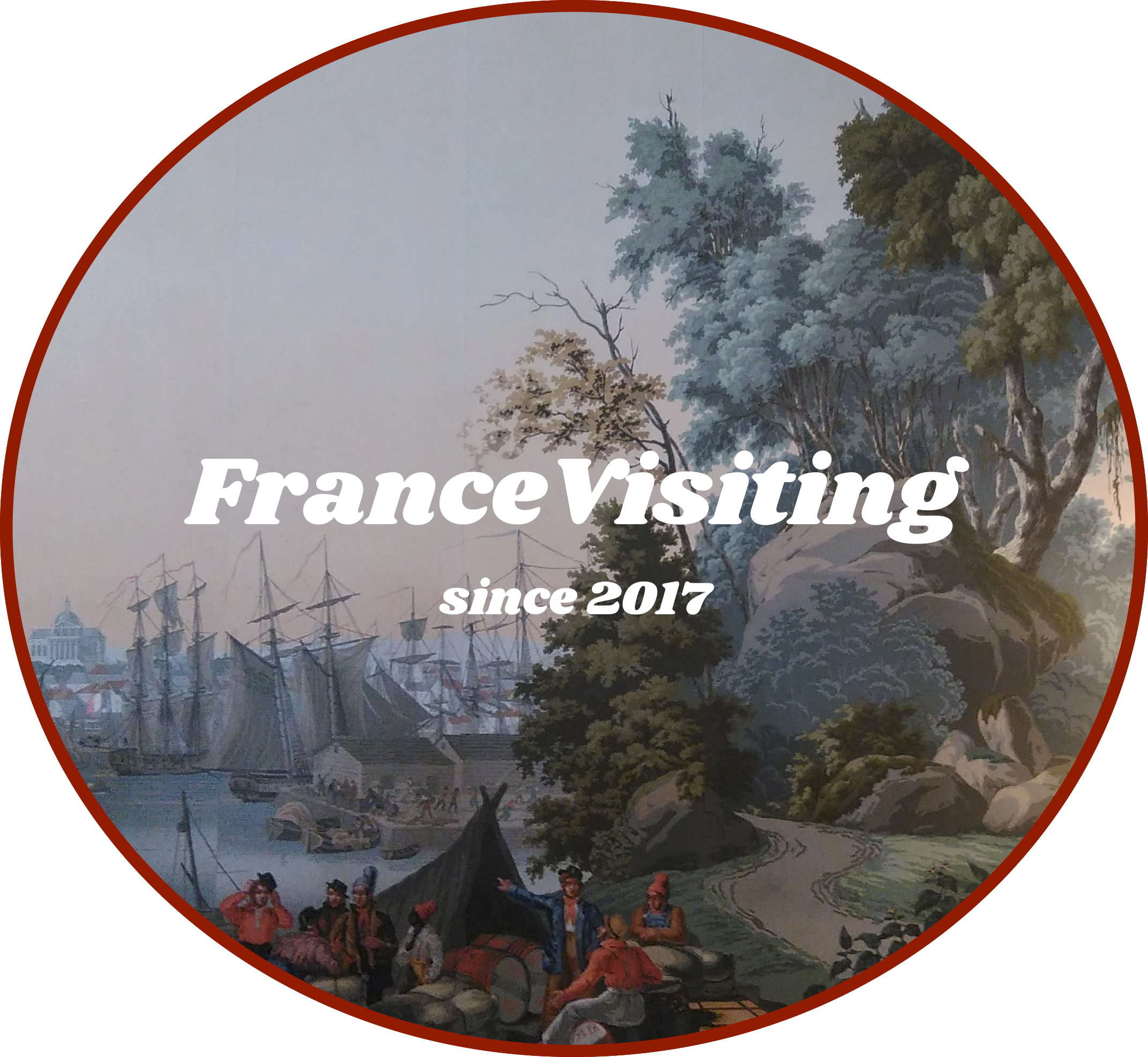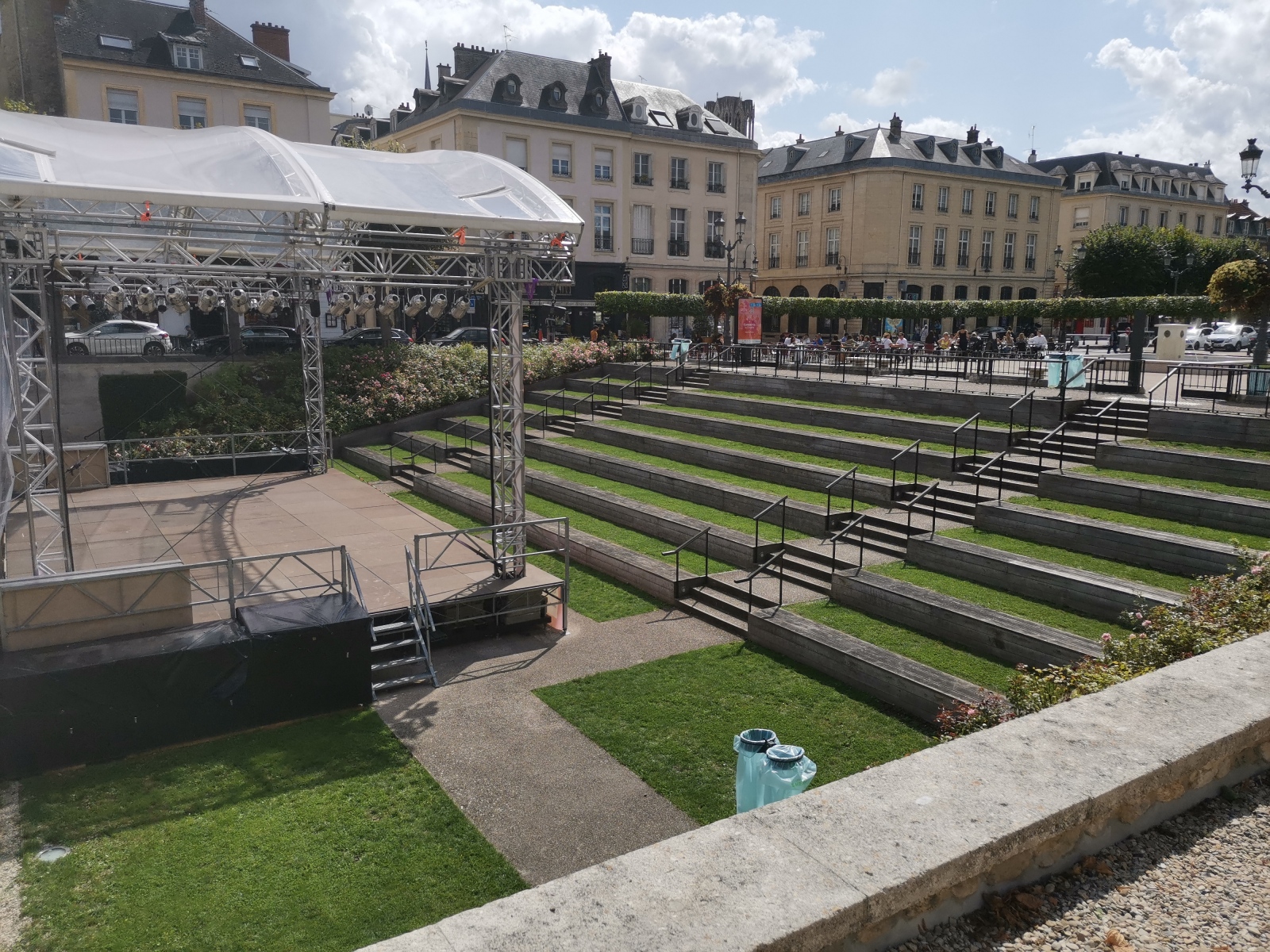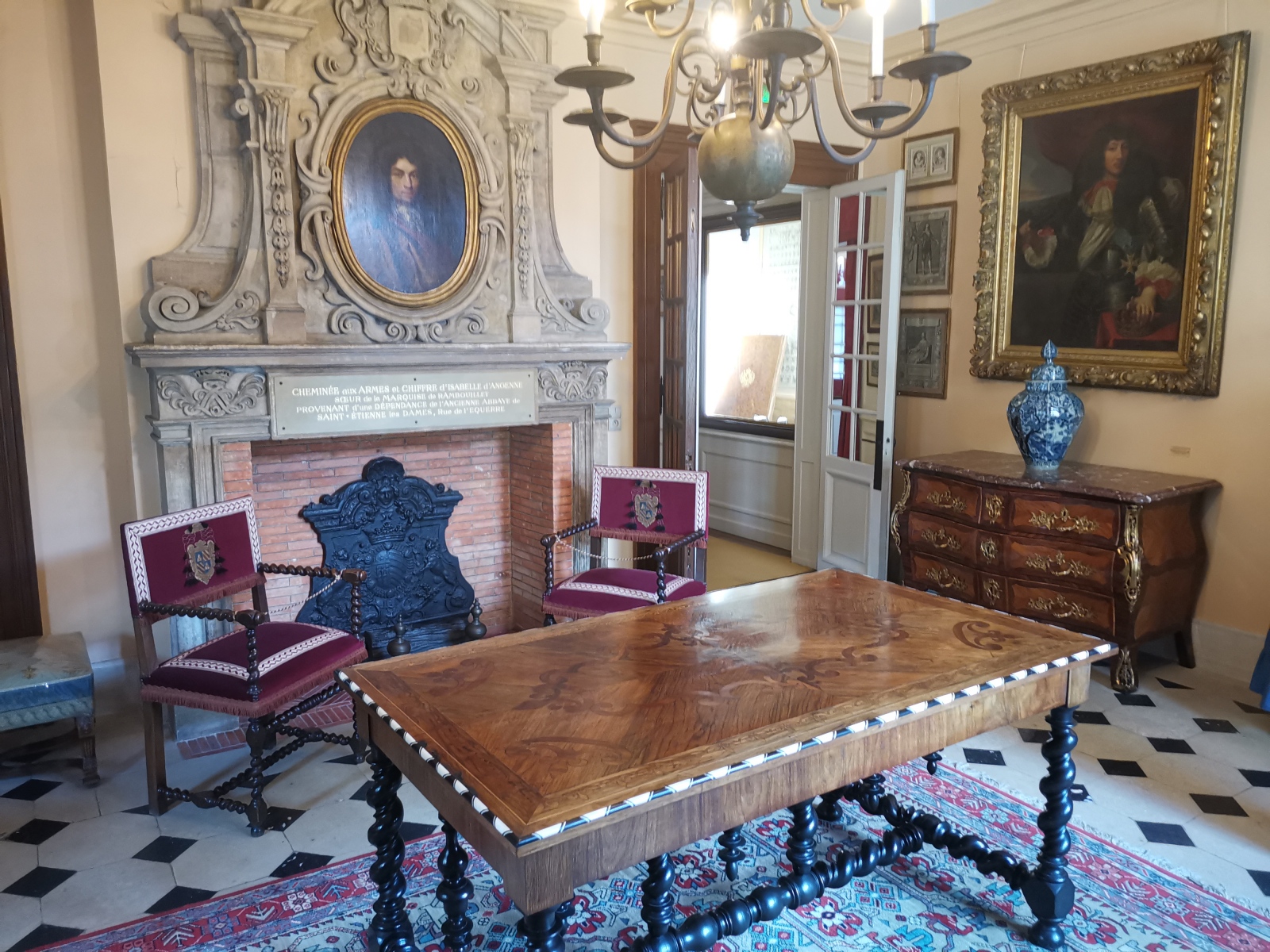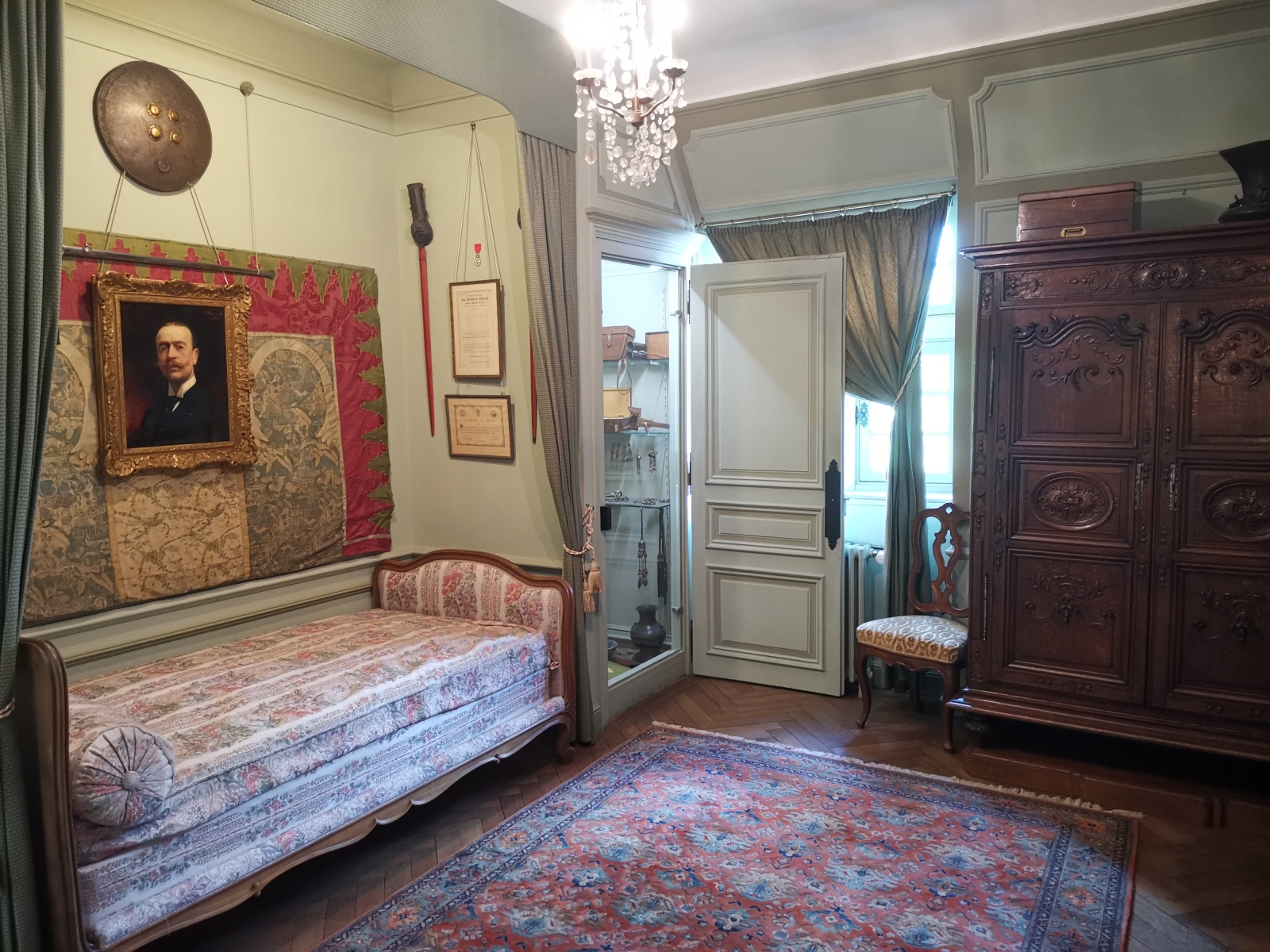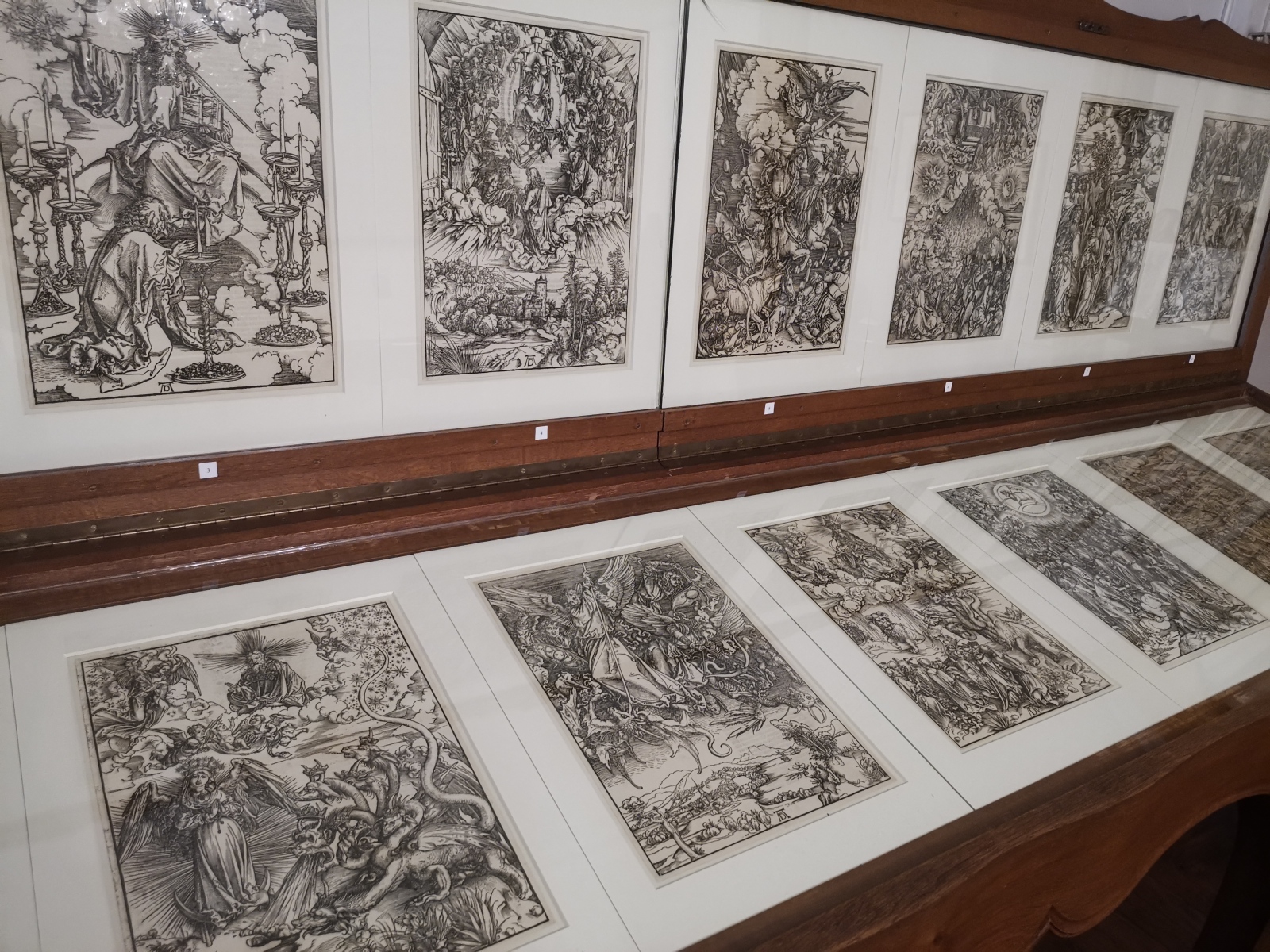Attend the Renaissance of the Maison des Musiciens of Reims, and its nearby Hotel Le Vergeur!

Reims (Marne) rue de Tambour, Maison des Musiciens, détails des nouvelles sculptures


As we have already seen earlier in our previous articles, Reims was once an ancient fortified city, after being a Roman oppidum of which little remains, apart from the rue des Tambours and the Cardeau which were fully integrated into the old Roman city. Otherwise, you could as well admire the Porte Mars, one of the four gates that closed the city. This gate, which was included in the ramparts of Reims, was no longer visible and was therefore revealed more recently.
In a city where the trade of wine, cereals and wool, of which Colbert developed the textile industry, we find traces of this economic dynamism scattered everywhere. In addition to the 33 kings crowned in the legendary Reims Cathedral, this royal city knew a luxurious destiny, as can testify the many old dwellings made of chalk slabs, from the surrounding crayères (chalk pits).
Nevertheless, after the bombings of 1914, 70% of the city was destroyed and unfortunately only 7 houses remained fully intact. A reconstruction occurred in the 1920s, involving many incredible Art Deco and Art Nouveau realizations, along the renovation of historical monuments, such as recently this Maison des Musiciens and its neighbor l’Hôtel Le Vergeur. By Alex Plato
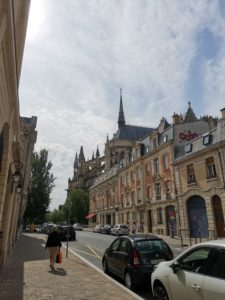

Around the center of the former Market Place of Reims, where remains the vestiges of a very old Gallo-Roman forum, standing at the level of the ancient soil, stands a rich cultural offer. For your information, nowadays many concerts and shows organized in this formidable agora, surrounded by plenty of outdoor cafés and restaurants.
In the immediate vicinity of this forum, and since the end of the 12th century, the district of the Rue du Marc was mostly inhabited by the nobility and the rich bourgeoisie. It was also the center of the commercial activity of the city, that is to say the lodges of merchants, bankers and money changers.
Numerous legendary mansions survived, as a whole or just partly before the 1914-1918 war. Among them, the famous House of Musicians; the neighboring hotel which was later called the Palais Royal (Royal Palace); and of course the Hôtel le Vergeur, with its vast room lit by tall mullioned windows and rosettes.


Not far from this Place du Forum (of the markets) stands a stone facade, which revealed a certain social success, whereas in a town, there were rather half-timbered houses. Among them, we find some jewels in the colorful Rue des Tambours, such as the newly renovated House of Musicians, whom the great 19th century architect Viollet-le-Duc considered to be one of the most beautiful secular statuaries of the 13th century in Europe.
Thus, it seems that this house was erected during the King St Louis‘ century, around 1250, when a wealthy but unknown patrician ordered the construction of this bucolic facade and these five statues of musicians, symbolizing such an original scene. These artists were miraculously saved and sheltered in 1971, at the Saint-Remi Museum, after the endless bombardments of the 1st World War… As you can see, the musician on the left side of the facade, plays the flute and the tambourine. In his right hand he holds a wand that appears to strike the instrument. To his left, the other musician plays the kid, an instrument carved from a skin made from goatskin, while the other ones are a harp player and a fiddle player.


Adjoining the the also gothic styled Demeure des Comtes de Champagne, property of Taittinger, serving at the moment as reception hall, which also was used as a rear base the time of those delicate works. This Renaissance project was initiated in 2015, with the decision to produce authentic reproductions of these different instrumentalists (kid player, flute), with the use of digital modeling (before making polyurethane duplicates), for the repair of this fragile facade. Moreover, behind it, the installation of an outdoor concert stage is planned in their common garden.
This mysterious edifice could have only been refreshed with the support of the Municipality of Reims, associated with Champagne Taittinger and the Association Renaissance de la Maison des Musiciens de Reims. However, the financial funding, came mainly from private sources, with the participation of around 170 generous donors, who reunited more than 1.2M euros, such as the patron Barbara de Portago who runs the Fondation de Versailles, along the Crédit Agricole and the German agent of Taittinger (photo credits: Alex Plato & Association Renaissance).

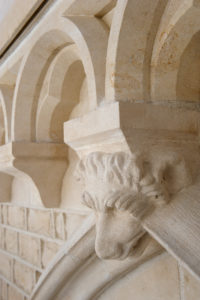
Adding to this, this longtime collective wish was formalized with of course, the presence of the ensemble of the team, who was deeply involved in this project, and in the framework of the mayor of Reims, Arnaud Robinet and the Champagne Taittinger heir and honorary president of the house, Pierre-Emmanuel Taittinger, who is very active in the preservation of the Reims heritage, including its application in the stained glass workshop Simon-Marq.
This “hundred year dream”, still as said by Pierre-Emmanuel Taittinger (at a cost of 972K euros), was supervised with the help of the architect Frédéric Coqueret and Patrick Demouy, professor of medieval history at the University of Reims, who has devoted many researches about the history of his city. On top of that, still passionate about this restitution, he compares this fine renovation to the know-how of the original artisans from the Middle Ages and explaining that: “For me who am a historian, it reminds me of the construction sites of the Middle Ages. This is how we really worked in those workshops to prepare the stones”.


At last, this historical performance (to the new facade and the statuary), built in the thirteenth century, in the area between the Rue du Marc and Rue de Tambour (one of the oldest streets of Reims) was possible thanks to the stonemasons and sculptors of the Ateliers Bouvier from Avignon and Ateliers Tollis from Paris.
By the time, those two structures took part of their inspiration on the nearby Demeure des Comtes de Champagne, one of the rare remains of the medieval architecture of Reims. This majestic palace was the residence of many passing crowned personae, especially during the occasion of royal coronations, which were held in the Cathedral. Today, as property of Champagne Taittinger, which restored this house of the thirteenth century, that still hosts receptions, exhibitions and concerts.
Moreover, with this specific action, the city of Reims shows its desire to preserve and support its precious local heritage, with its sights set on becoming the designation of the European Capital of Culture in 2028. That’s why in parallel, further renovating projects are lead in this way, such as the Musée des Beaux-Arts (see our last article here) and the Palais du Tau, which would close soon for 2 years of work.
Maison des Musiciens, 22 Rue de Tambour, 51100 Reims (France). More information on the official website.


Just behind this Maison des Musiciens and its flamboyant Rue du Tambour (with eight different hues), still holding the history of Reims’ mansions, let’s get into the Hotel Le Vergeur, built in the 13th century, in a district once populated by rich merchants. This edifice belonged in the 16th century to Nicolas Le Vergeur, a typical Reims bourgeois who transformed it and offered it the characteristics of a typical mansion from the Renaissance, thanks to specific interior and facade designs, arranged around a courtyard.
Its then owner Hugues Krafft (1853-1935) decided to bring back a large number of objects, from his many travels around the World, clothing and photographic plates constituting a beautiful ethnographic ensemble. Thereafter, this avid collector acquired this Hotel Le Vergeur in 1910, notably in order to save its remarkable painted wooden ceiling, located in the Gothic hall from the thirteenth century, which was planned to a departure to the United States.

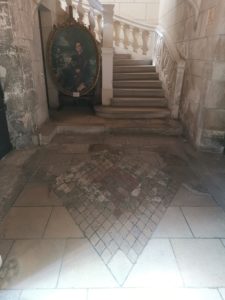
This so called hall, has now unfortunately disappeared but after the First World War, this philanthropist financed the reconstruction of the building, largely destroyed by bombing, and installed the headquarters of the Society of Friends of Old Reims, an association he created in 1909.
This Hotel Le Vergeur, as well Upon his death, his rich collections of furniture and art objects formed the core of the Musée Le Vergeur, which today offers a remarkable immersion in this bourgeois interior from the 18th to the beginning of the 20th century. This mansion notably contains a retrospective of bygone bourgeois furniture. For instance, he hall of honor, whose 15th century pavement floor is still preserved, includes an impressive portrait by the Dutch painter Jacob Backer, a contemporary of Rembrandt, as well as an imposing 17th century German cabinet.


In the Renaissance gallery, which adjoins the main building, a selection of Gallic and Gallo-Roman archaeological remains evokes the history of the ancient city, called Durocortorum.
This Museum, worthy of interest, reserves many surprises on every level. On the first floor, the reception rooms are arranged around a central hallway, the Salon des Sacres, along the boudoir, the smoking and the dining rooms which are decorated with opulent Louis XIII, Louis XV and Louis XVI styled furnitures. The history of the french Kings coronations, in the eighteenth century, is traced through various paintings and prints, the universal history mingling with the one of the edifice.

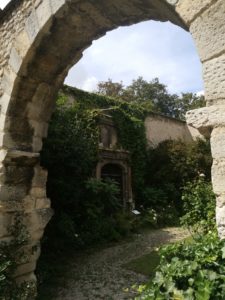
From a portrait to an other, you would recognize the carved bust of the Champagne mogul Pommery, his wife and his son! Furthermore, you may also discuss with the guide about the story of the famous Reims biscuit (biscuit means cooked twice), that became pink thanks to a dying process. This monument of the Reims gastronomy, initiated by the Fossier biscuit factory, was already part of the coronation ceremony of Louis XVIth.
If you take advantage of a shiny weather, you should have a walk through the tasty garden, behind the hotel. This natural heaven hosts several ancient facades, saved from destruction. Thus this ensemble constitutes a true outdoor trace of the Reims architecture, and don’t forget to play your skills on the piano, at the disposal of the musical enthusiasts!


As you could notice upon, the rooms reserved for the servants, the kitchen and the office. The brass, starring the initials of the master of house “HK” represents the quintessence of French and foreign porcelain.
A very accurate reconstruction of this bourgeois interior was operated, with an elegant atmosphere in every part of the edifice, without forgetting the premium tableware, the luxury amenities in the bathroom and even one of the first water heaters by that time!
The Hotel staff could eventually take advantage of the two very advanced kitchens for that time, and prepare the best dinners in town! This hypothesis could be verified with the help of the various menus, which took part Mr Kraft, hung on the walls. You could also admire an incredible complete service of porcelain of 261 pieces from Limoges, like this service à l’oignon (onion service) from the Meissen factory, situated in Dresden.


This trip in past modernity is prolonged with this doorbell table indicating where the ringtones come from. It’s understandable that with such an imposing mansion, this kind of technology may have saved much time!
There are many references in this Hotel to the royal past regarding the city of Reims, like those Queen busts and those coronations official costumes. This is a real Cabinet of Curiosities with Art and Culture everywhere!
In the other hand, you could as well discover the personal and family history of Hugues Krafft, with children’s drawings, painted portraits and family photos.

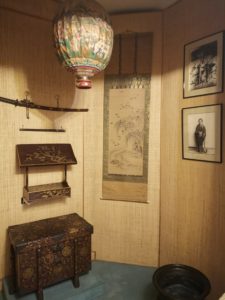
Otherwise, many souvenirs from Mr Krafft’s trips in Japan are also exhibited or his notable passion for music, with his personal gramophone or piano.
Indeed, the top floor sums up all of Mr. Krafft’s travel memories, particularly in Asia and Europe.
His collections have been enriched each year, thanks to the generosity of many donors, including a precious complete and original series of engravings from Albrecht Dürer, named L’Apocalypse and La Grande Passion.
In the same room, you could also admire the oldest illustrated representation of the King Henri III‘s coronation. This is a very rare witness of the French History, you should take some time on this memorable drawing!
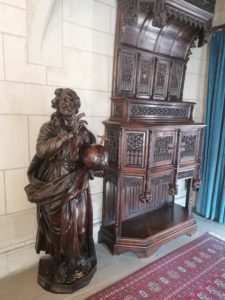
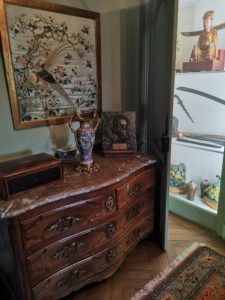
You would find many objects brought back from his travels all around the world, his painting equipment, his cameras, as well as some of the thousands of photographs he has made.
This amount of elements spread, through the rooms, allows us to better understand the amazing and fascinating personality of this enlightened philanthropist and collector.
By the way, he was one of the important figures of Japonism in France and even Europe. The different facets of Krafft are thus sketched, at once young bourgeois having received a classical education, while acting as a real globetrotter, active member of many learned societies and defender of the local inheritance.
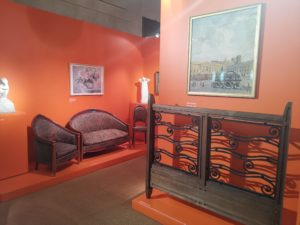


Last but not least, just remember the first exhibition at this Hotel Le Vergeur, associated with the team of the Reims Museum of Fine Arts, to highlight the power of arts in the history of the city, at the time of its reconstruction and just after the disasters of the Great War. It was during this difficult period that Reims citizens gathered forces to revitalize and rebuild this destroyed city.
Standing on an orange background, this cultural path showed about fifty pieces belonging to Le Vergeur Museum, the Carnegie Library and, mainly, the Museum of Fine Arts. Thus, this exhibition evoked the face of the city in the 1920s. After a quick presentation of the damaged and lost places, the visitor may wander through the alleys under reparation, then discover the latest constructions…
The result was a series of paintings, stained glass, drawings, posters, glassworks and ironwork which rightly illustrate the hope of a city, seeking to regain control of its destiny. Through a certain lifestyle, oscillating between tradition and modernity, many artists were then mentioned there, such as Ernest Kalas, Jacques Simon, Paul-Hubert Lepage, Adrien Sénéchal, Gustave Pierre, Jean Goulden, René Lalique, Paul Bocquet…
Hotel Le Vergeur Museum / 36 Place du Forum, 51100 Reims (France) / Phone: 00 33 (0)3 26 47 20 75 / Only accessible by private visits, every hour. Open every day from 2 pm to 6 pm, closed on Mondays and on January 1st, May 1st, November 1st and December 25th.
